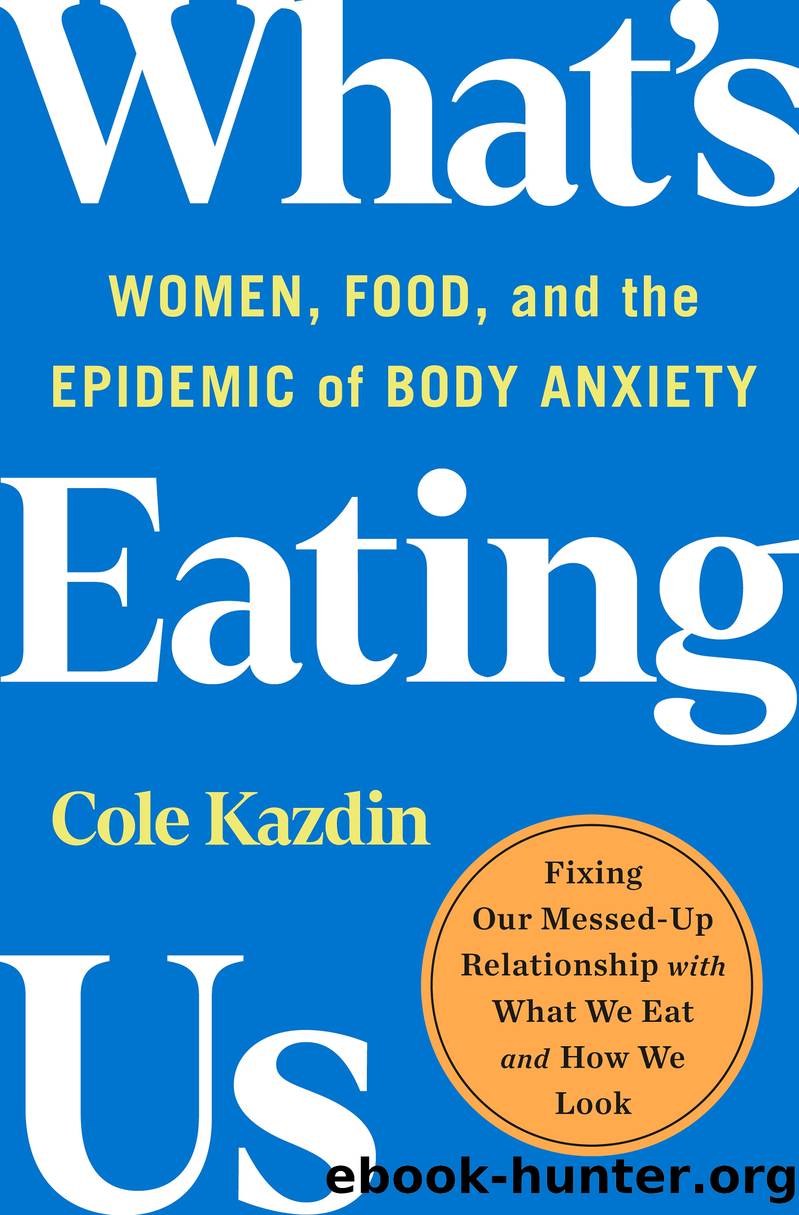What's Eating Us by Cole Kazdin

Author:Cole Kazdin
Language: eng
Format: epub
Publisher: St. Martin's Publishing Group
Managing Your Brain
At my first meeting with Laura Hill, she asks me a series of questions about my eating disorder: Was I able to physically sense hunger back then? Did I have to be famished for hunger to register? Do I have a high pain threshold? Did I experience guilt or anxiety around eating? As I responded to each question (no, yes, yes, yes), I sensed pretty quickly from her reactions that I was acing this test.
âWow, Cole,â she took some notes, then finally looked up, âYou are answering everything that literally UC San Diegoâs brain research is showing.â
Hill and her colleagues have been working with Kaye and his team, incorporating research into the development of a new treatment, Temperament Based Therapy with Support, or TBT-S.
TBT-S takes a âharness your superpowers for goodâ approach, looking at the traits that made a person primed for developing and sustaining an eating disorder, and redirecting them in a positive way. Beginning with awareness of our individual temperamental traits along with what is and isnât firing in our brain, we can create a new system for ourselves.
Hill is not officially treating me, but she agrees to guide me through the initial questionnaire she uses with patients and to continue to meet to help me build what she refers to as my âtoolboxâ: a unique-to-me set of habits, skills, and coping mechanisms for navigating my brain.
âIndividuals genetically inherit a temperament, a set of personality traits that can be your best friend or your worst enemy,â she told me. âYour traits will be with you forever, and in a very biological way, the vulnerability could be there forever. But in a practical, productive way, itâs your best asset.â
We begin with a diagram of a brain that Hill calls âGertrude,â and she walks me through what she suspects may be going on in my head, much in the same way you might point out streets on a map to a tourist asking directions.
First, the insula, which seems too tiny to be able to affect me so deeply, the area that doesnât get the information about hunger. Next stop, the amygdala, this tiny kidney bean that starts the fear and worry, Maybe I shouldnât have eaten, maybe I should have only eaten half, and then a signal that arrives at the front of the brain, the reasoning part, the destination, Why did I do that? What should I have done differently?
Is this how people feel when a psychic nails it?
As Hill is speaking, sheâs basically reciting an inner monologue I wrestle constantly. Instead of a crystal ball, Hill is reading my thoughts, fears, and worries in this diagram of a brain. Not my brain. Gertrude. But it may as well be.
âThe biggest misnomer about eating disorders is that itâs an illness of overcontrol. The reality is, the brain doesnât have the signals in order to control,â she said. âSo, you donât have the fundamental signals that are necessary to affirm every bite you eat, affirm if youâre hungry, affirm if you should eat another bite.
Download
This site does not store any files on its server. We only index and link to content provided by other sites. Please contact the content providers to delete copyright contents if any and email us, we'll remove relevant links or contents immediately.
What's Eating Us by Cole Kazdin(109)
No Apologies by Niamh Orbinski(91)
Recover from Eating Disorders: The Homeodynamic Recovery Method, Step by Step Guide by Gwyneth Olwyn(78)
The Self-Worth Path: A Guided Journey to an Empowered Life by Papez Lisa(70)
I'm So Effing Hungry by Amy Shah(66)
Dancing with a Demon by Valerie Foster(65)
The Predatory Lies of Anorexia by Abby Kelly(64)
The Psychology of Overeating by Kima Cargill(59)
Hope, Help, and Healing for Eating Disorders by Dr. Gregory L. Jantz(55)
Eat with Joy by Stone Rachel Marie;Wirzba Norman;(53)
Man Up to Eating Disorders by Andrew Walen(52)
Think More, Eat Less by Janet Thomson(51)
A Fat Girl's Manifesto by Cyr V. Daniel(51)
Good Girls: a Story and Study of Anorexia by Hadley Freeman(49)
Lessons from the Fat-o-sphere by Kate Harding(47)
The Parent's Guide to Eating Disorders by Jane Smith(43)
Cognitive-Behavioral Treatment of Obesity: A Clinician's Guide by Zafra Cooper Christopher G. Fairburn Deborah M. Hawker(42)
Body in Mind: a New Look at the Somatosensory Cortices : A New Look at the Somatosensory Cortices by Michael Schaefer(41)
Overcoming Anorexia Nervosa by Christopher Freeman(39)
